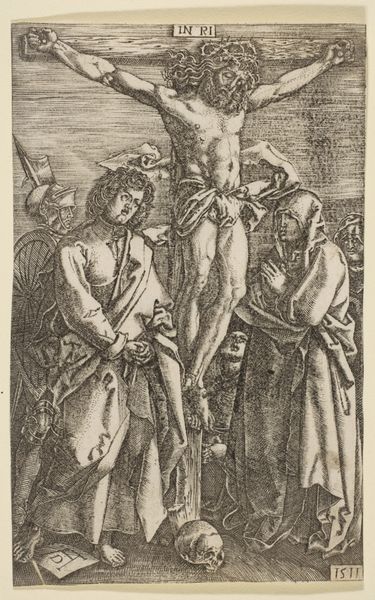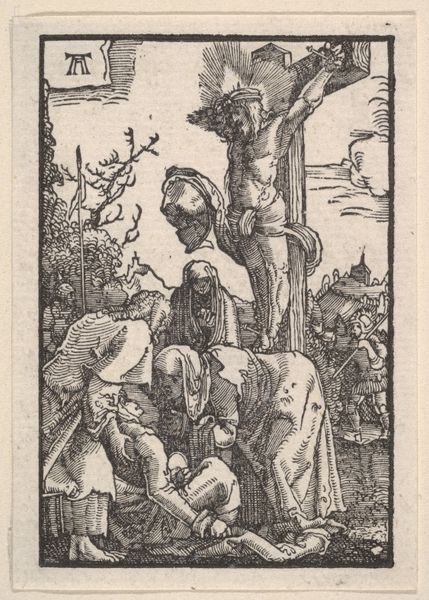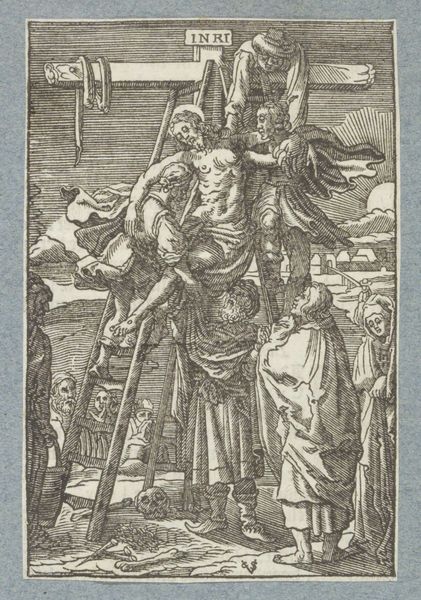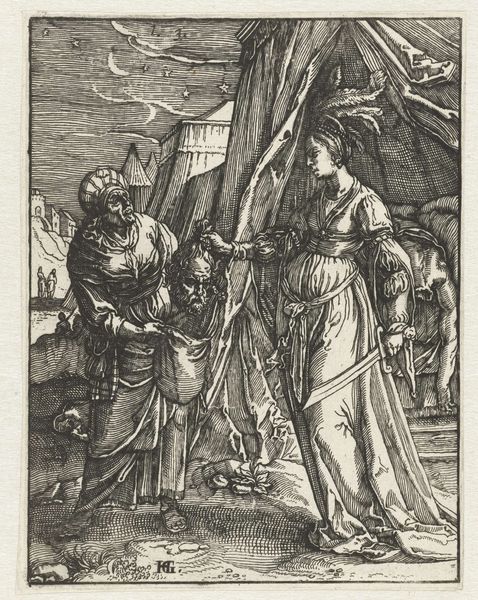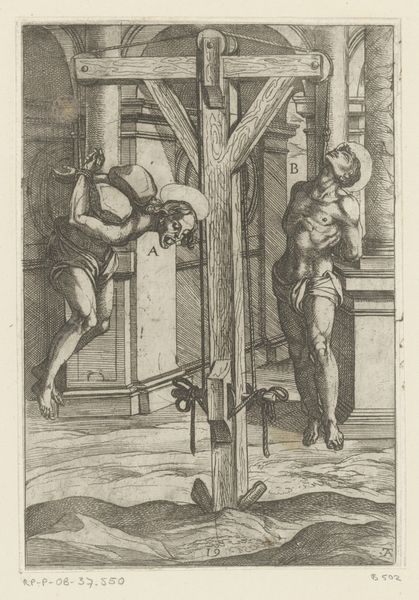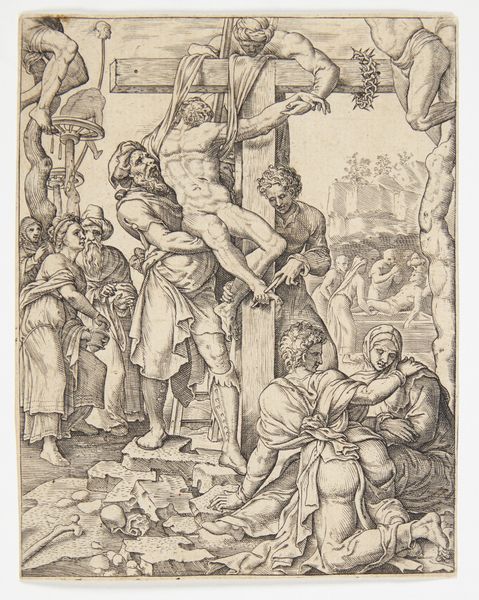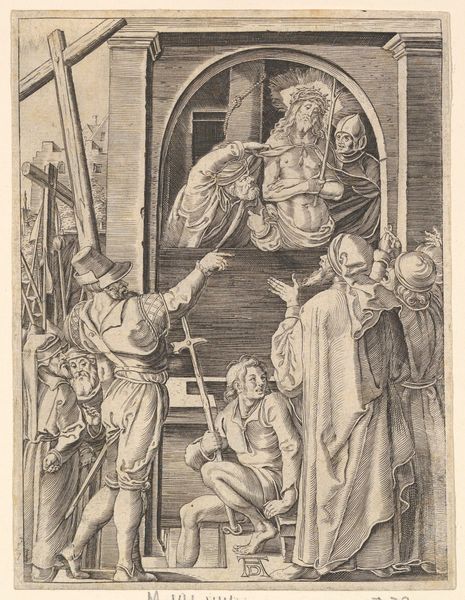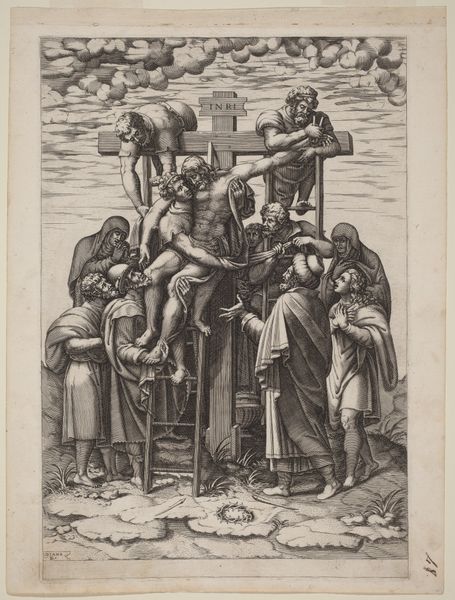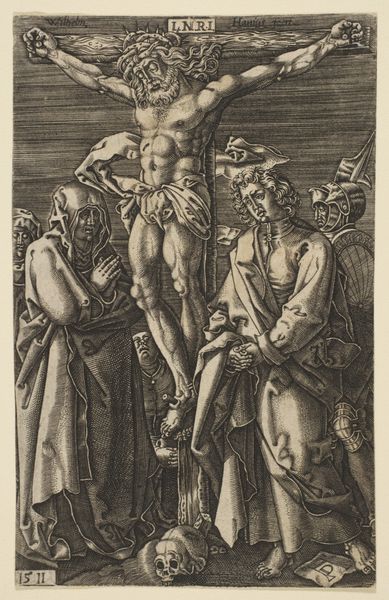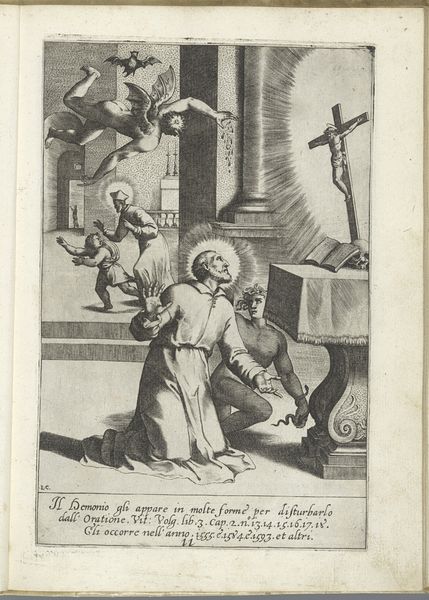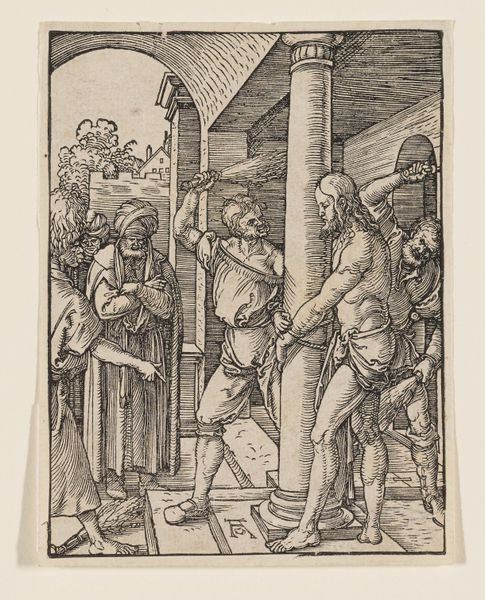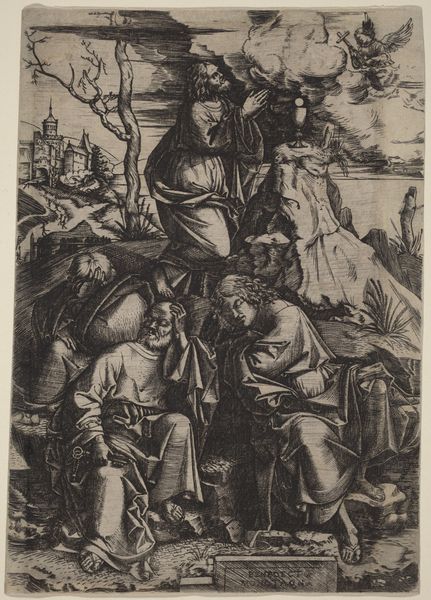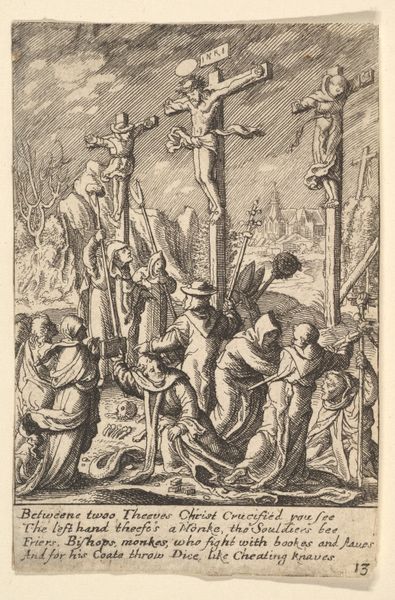
The Virgin of Sorrows: The Descent from the Cross; one of nine surrounding compartments from the Virgin of Sorrows, now separated 1520 - 1582
0:00
0:00
drawing, print, engraving
#
drawing
#
pen drawing
# print
#
figuration
#
cross
#
history-painting
#
italian-renaissance
#
engraving
#
virgin-mary
Dimensions: Sheet: 2 13/16 × 2 1/8 in. (7.2 × 5.4 cm)
Copyright: Public Domain
Editor: So, this is Giorgio Ghisi’s "The Virgin of Sorrows: The Descent from the Cross," dating from 1520 to 1582. It's an engraving. There’s a lot of grief conveyed here. What sociopolitical ideas of the Italian Renaissance do you think are reflected? Curator: I see a potent articulation of societal power structures. Think about the Virgin Mary, her suffering a focal point, representing the idealized, yet often suppressed, feminine. How does Ghisi's work participate in a broader narrative of female pain and its instrumentalization within religious and patriarchal frameworks? Editor: That's interesting! I was so focused on the religious aspect that I didn't really think of the female pain of it all. I mean, is this maybe a comment on the power dynamics of the church at the time? Curator: Absolutely! The Descent from the Cross wasn't just a religious scene, but a cultural performance loaded with complex, gendered, and political meanings. Notice the male figures actively taking Christ down, contrasting with the Virgin’s passive sorrow. What does that tell us about agency and representation in 16th-century Italy? How does her passivity serve or challenge societal expectations? Editor: It definitely makes you think about how women were expected to behave, or rather, how their suffering was perceived and used. Maybe that's why I see so much grief in this image because I see that struggle. Curator: Precisely. We have to unpack these layers to see how art not only reflects but also reinforces and sometimes subtly challenges the dominant ideology. Understanding this allows us to engage with the work on a much deeper level, questioning its implications and its resonance even today. Editor: Wow, that’s given me a completely new way of looking at it. I'll definitely keep that in mind! Curator: The key is to contextualize the artworks within broader historical and social frames of thought. I'm glad I was able to help you gain a new perspective on this today!
Comments
No comments
Be the first to comment and join the conversation on the ultimate creative platform.
